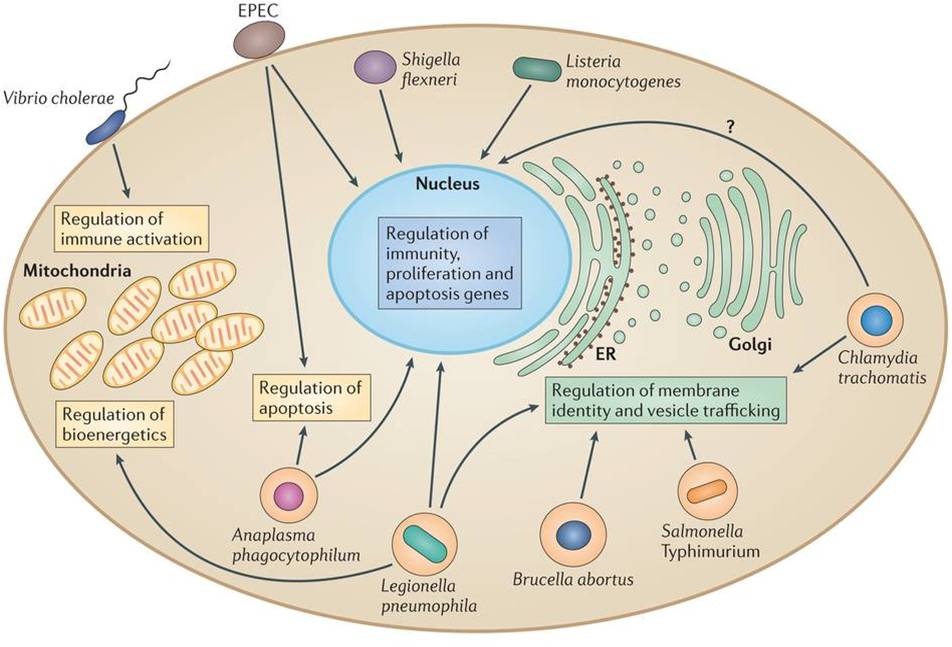



Many bacterial pathogens have evolved the ability to subvert and exploit host functions in order to enter and replicate in eukaryotic cells. Gene expression is regulated in the nucleus, and pathogenic bacteria such as enteropathogenic Escherichia coli (EPEC), Shigella flexneri, Listeria monocytogenes, Chlamydia trachomatis, Anaplasma phagocytophilum and Legionella pneumophila target this organelle to modulate the expression of genes involved in immunity, proliferation or apoptosis. Membrane identity and vesicle trafficking are regulated in the endoplasmic reticulum (ER)-Golgi network, and intravacuolar bacteria (such as L. pneumophila, C. trachomatis, Brucella abortus and Salmonella enterica subsp. enterica serovar Typhimurium) target this network to form a safe niche for intracellular replication. Mitochondria regulate cellular bioenergetics, apoptosis and immune activation, and bacteria such as EPEC, Vibrio cholerae, A. phagocytophilum and L. pneumophila target mitochondria for their benefit.
Source: Nature Reviews Microbiology (2015) doi:10.1038/nrmicro.2015.1
How Eukaryotic organelles targeted by pathogenic bacteria.
